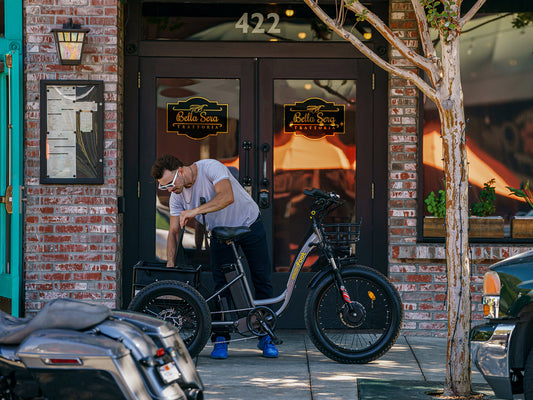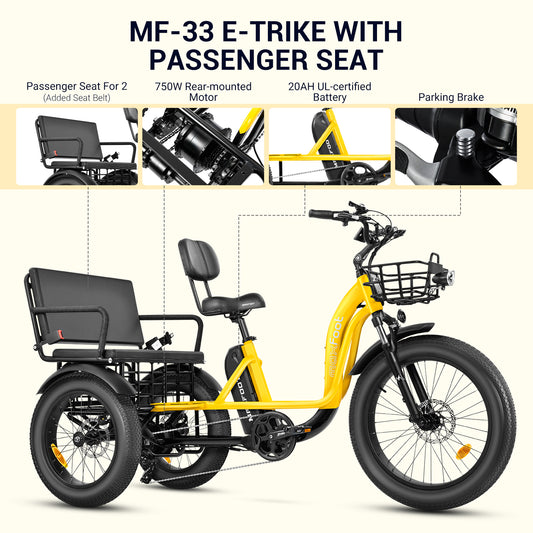In the bustling, ever-evolving landscape of New York, the rise of electric bikes has revolutionized urban commuting. These innovative machines, marrying the convenience of traditional bicycles with the power of electric motors, have emerged as a popular, eco-friendly alternative to conventional modes of transportation.
They offer a unique blend of speed, efficiency, and flexibility, which makes them ideal for the city's dynamic rhythm. However, as with any form of transportation, there are rules to the road.
Understanding the legalities surrounding Ebikes in New York is crucial for riders to ensure a safe, enjoyable, and lawful riding experience. This article delves into the specifics of electric bike regulations in New York, providing a comprehensive guide to the types of electric bikes that are street-legal in the city.
Decoding eBike Laws in New York
New York State has specific laws defining and regulating the use of Ebikes. The state categorizes Ebikes into three classes: Class 1, Class 2, and Class 3. Each class has distinct characteristics and regulations:
Class 1 Ebikes are equipped with a pedal-assist-only motor, which ceases to assist the rider once the bike reaches a speed of 20 mph. This means that the motor only works when the rider is actively pedaling and does not provide any assistance beyond the 20 mph limit.
Class 2 Ebikes feature a motor that can be used exclusively to propel the bicycle, even without pedaling. However, similar to Class 1, the motor stops assisting when the bike reaches a speed of 20 mph.
Class 3 Ebikes are designed to provide assistance only when the rider is pedaling and cease to assist when the bicycle reaches 28 mph. However, New York City only permits top speeds up to 25 mph.
Registration and Licensing
The process of owning and operating an eBike in New York is made relatively straightforward by the fact that they do not require prior registration and licensing, unlike motor vehicles. This ease of access contributes to the growing popularity of Ebikes in the city.
However, there are age restrictions in place. Riders must be at least 16 years of age to ride an eBike, and only those aged 18 or over can ride a Class 3 electric bike.
Helmet Laws and Safety Regulations
Safety is paramount when riding any form of transportation, and Ebikes are no exception. In New York, helmets are required for all riders on any motorized device or vehicle. This law is strictly enforced, especially for riders aged 16 to 18 and working cyclists.
Not abiding by the law may attract legal charges or fines. Therefore, it is highly recommended for every rider to wear a helmet for safety reasons.
Navigating the City: Designated eBike Lanes
New York City doesn’t allow electric bikes or bicycles on highways, expressways, drives, interstate routes, or bridges. They are only allowed on designated bike lanes. Some of these bike paths include:
- Buffered Bike Lanes:These lanes provide a designated space for cyclists, separated from vehicular traffic by a painted buffer zone. This design offers cyclists a sense of security, particularly in busy city routes known for heavy traffic.
- Shared Bike Paths: These paths are multipurpose, accommodating different forms of transportation. Cyclists using these lanes should expect to share the road with buses and other vehicles.
- Protected Bike Lanes:These lanes offer a higher level of protection for bikers. Unlike shared lanes, protected lanes are physically separated from other traffic, using barriers such as curbs or bollards, to minimize interaction with other vehicles.
- Green Bike Lanes: These lanes function similarly to other bike lanes, but they are distinguished by their green paint. This vibrant color makes them stand out, providing clear guidance for cyclists.
- Sharrows: Sharrows, or shared lane markings, are symbols painted on the road to signify that the lane is a shared space for both cyclists and motorists. These markings remind all road users to share the road responsibly.
All these designated bike lanes are usually marked with paints, bike symbols, and signage, so cyclists can easily navigate through the city.
Laws Regarding Modification of Electric Bikes
The New York City law stipulates certain restrictions on modifying bicycles, particularly those with pedal-assist features.
Firstly, it prohibits any alterations that would increase the bicycle's power output to 750 watts or more. This limit is set to ensure the safety of both the rider and others on the road.
Secondly, the law forbids modifications that would prevent the motor from disengaging under specific conditions. These conditions include when the operator applies the brakes, when the operator stops pedaling, or when the bicycle reaches a speed of twenty miles per hour. This rule is designed to maintain control over the bicycle's speed and ensure safe stopping.
Lastly, the law restricts any modifications that would artificially increase the speed of the pedal-assist bicycle motor by means other than pedaling. This provision is aimed at preserving the integrity of the pedal-assist feature and prevent excessive speeds that could pose safety risks.
Conclusion
Understanding the laws and regulations surrounding eBikes in New York is essential for both safety and legality. While the rules are relatively flexible, they are designed to ensure the safety of all road users.
By adhering to these laws, riders can enjoy the benefits of electric bikes while ensuring they are operating within the legal framework of the city.
Always remember to ride responsibly, wear a helmet, and respect all road users for a safe and enjoyable eBike experience in The Big Apple.




